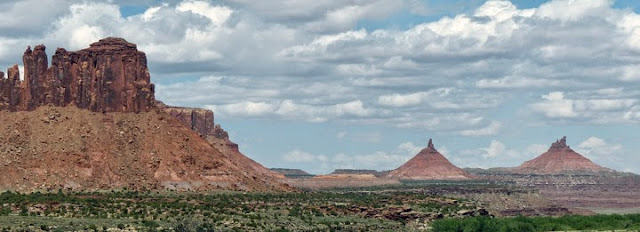 |
| Fred in Rwanda |
Each year at this time, Jo and I reach out to help
one person who is looking to improve their lot in life. We work through Kiva, a
group of people that acts as a go-between to locate and vet people all around
the world who need just a little help to get their business up and running.
Up until this year, we have made it a policy to help
women because of our experience around the world. The safest loan recipients seem
to be women because they invariably will move heaven and earth to meet their commitment
to pay back their loans. Men seem to give in to hopelessness more quickly and
throw in the towel earlier.
But this year, we decided to take a chance with Fred
of Nyagatare, Rwanda because,
as luck would have it, we’d just watched a television program last Sunday morning
which told about a new technology that has sprouted in Africa where people are
able to transfer money instantly and safely by using their cellphones. And Fred
is on the frontline using the technology.
Here is Fred’s story via Kiva:
Fred is an enthusiastic entrepreneur
who wants to thrive by growing his business. His company is a mobile servicing
company that offers mobile retail services to its clients. These services
include money transfer, withdrawing and depositing. In addition to that, the
company deals in airtime credits, electricity voucher selling and mobile
technical support services.
Fred's business is located in rural Northeast Rwanda near the Uganda border. His regular clients are people from his village, but he also does a significant portion of his transactions from people crossing the border by bus. Being able to transfer money, even small amounts, from mobile phone to mobile phone is a revolutionary resource in rural areas. Often when people move to the city for better jobs and economic opportunities, they want to send money back to their families in the rural villages. Through Fred's business, he is creating an opportunity for people in the villages to receive money without having to take long bus rides or relying on other people to deliver cash.
Fred is doing very well in business. He is well-known in the community as a highly motivated entrepreneur and a reliable person. However, he is not meeting all his clients’ demand. With working capital of about $4,000 USD, Fred will be able to triple his business to meet the growing demand for his services.
African Entrepreneur Collective has been working with Fred for about six months, and he has continued to be motivated and inspiring. AEC previously gave Fred a small loan, which he paid off always on time. AEC is thrilled to help Fred with his growth plans, enabling him to support many more people in his community. Fred is very successful and has always fulfilled his payment obligations, and this time will not be different.
Jo and I, in the past, have given small loans to people like Yun for her retail business in Cambodia, Sokhoeun for construction in Cambodia, Bou and her group of farmers in Cambodia, Le for her tailoring business in Vietnam, as well as March for her vehicle in Cambodia. All these women have paid back 100 per cent of the loans they were given and all report their lives have improved in dramatic ways because of the loans.
Fred's business is located in rural Northeast Rwanda near the Uganda border. His regular clients are people from his village, but he also does a significant portion of his transactions from people crossing the border by bus. Being able to transfer money, even small amounts, from mobile phone to mobile phone is a revolutionary resource in rural areas. Often when people move to the city for better jobs and economic opportunities, they want to send money back to their families in the rural villages. Through Fred's business, he is creating an opportunity for people in the villages to receive money without having to take long bus rides or relying on other people to deliver cash.
Fred is doing very well in business. He is well-known in the community as a highly motivated entrepreneur and a reliable person. However, he is not meeting all his clients’ demand. With working capital of about $4,000 USD, Fred will be able to triple his business to meet the growing demand for his services.
African Entrepreneur Collective has been working with Fred for about six months, and he has continued to be motivated and inspiring. AEC previously gave Fred a small loan, which he paid off always on time. AEC is thrilled to help Fred with his growth plans, enabling him to support many more people in his community. Fred is very successful and has always fulfilled his payment obligations, and this time will not be different.
Jo and I, in the past, have given small loans to people like Yun for her retail business in Cambodia, Sokhoeun for construction in Cambodia, Bou and her group of farmers in Cambodia, Le for her tailoring business in Vietnam, as well as March for her vehicle in Cambodia. All these women have paid back 100 per cent of the loans they were given and all report their lives have improved in dramatic ways because of the loans.
What we like most is that our donation get used and
reused many time over as these entrepreneurs pay it back and the money recycles
so it can be re-loaned to another person.
If you like this idea, click on www.kiva.org
 |
| Fred lives in Nyagatare, Rwanda in the northern corner of the country. |



















